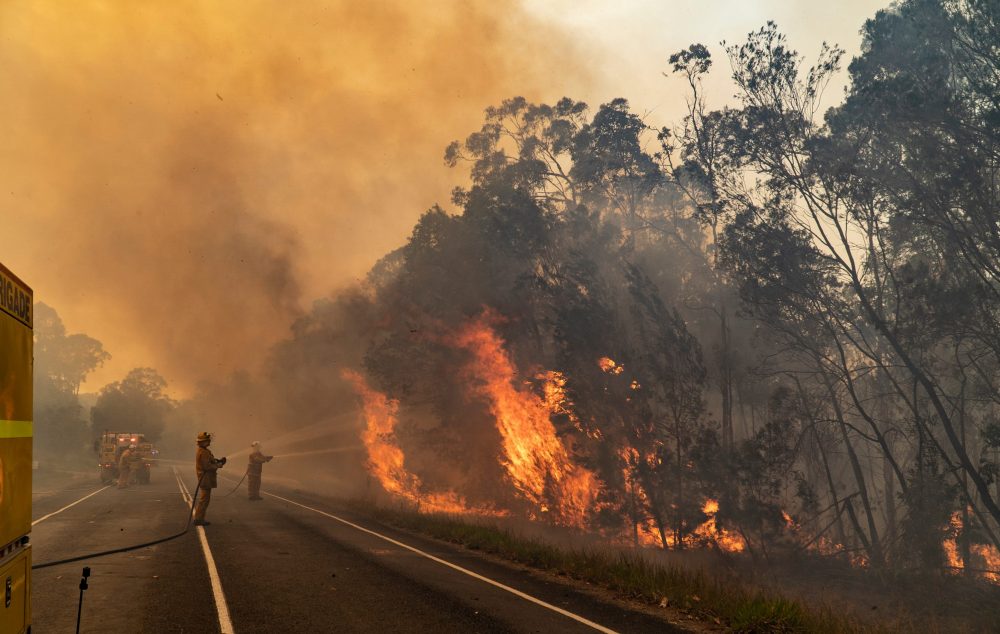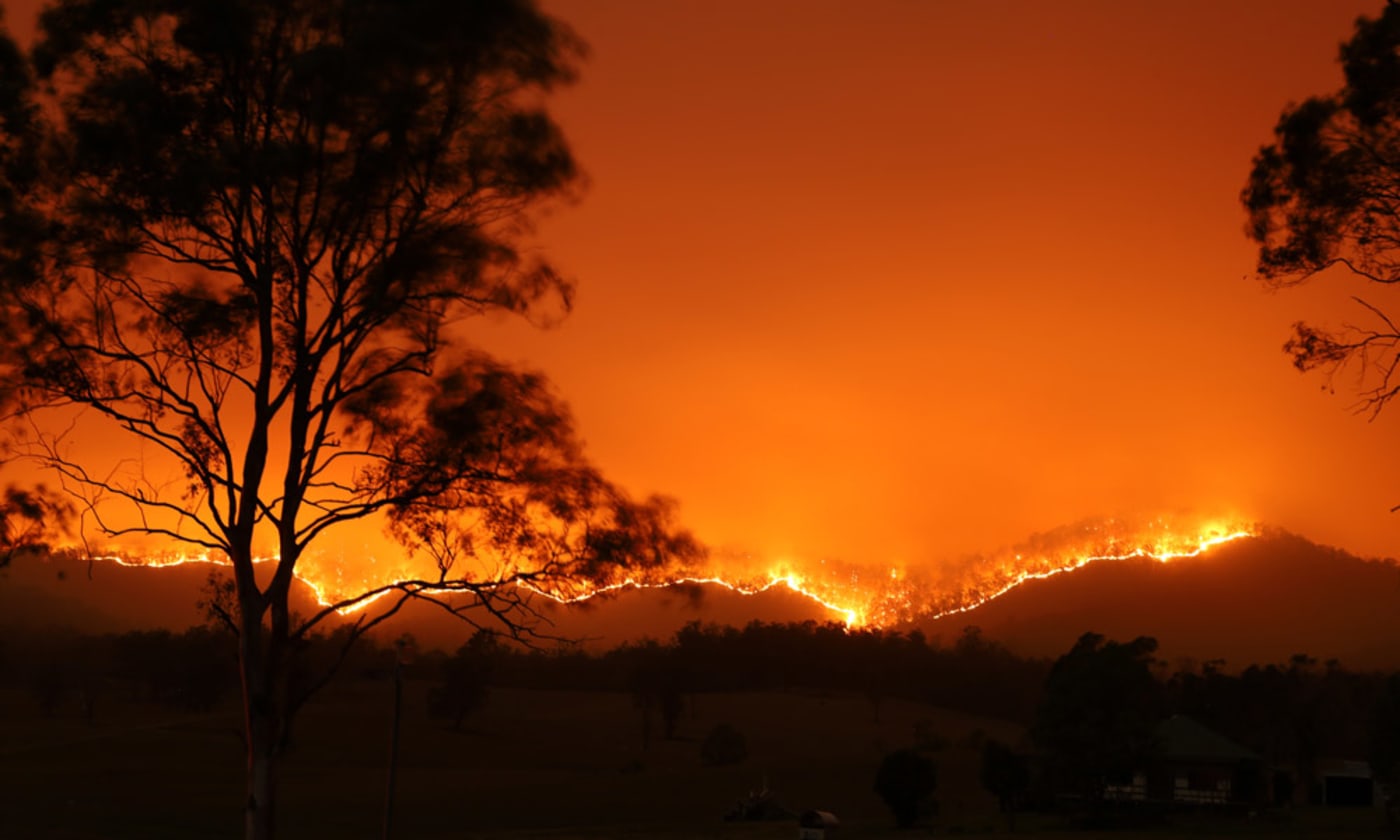Planning for Security: Establishing an Efficient Bushfire Management Plan
Planning for Security: Establishing an Efficient Bushfire Management Plan
Blog Article
Best Practices in Bushfire Monitoring for Comprehensive Fire Protection
In the world of bushfire administration, the quest for extensive fire protection requires a careful method that encompasses numerous important elements. From extensive risk analysis and calculated planning to the implementation of reliable greenery monitoring techniques, the range of ideal practices is huge and complex. Neighborhood involvement and education play essential duties in fostering resilience and preparedness, while very early discovery and caution systems work as vital safeguards. The seamless sychronisation of emergency situation feedback and evacuation plans is necessary for making sure the safety and security and well-being of people in the face of rising bushfire hazards. As we browse with the subtleties of these ideal techniques, an expedition right into the detailed web of techniques and methods awaits, guaranteeing a deeper understanding of the diverse landscape of bushfire management for comprehensive fire protection.
Risk Analysis and Planning
In bushfire management for fire security, the first step entails conducting a comprehensive danger assessment and developing a comprehensive strategy to minimize prospective threats. Risk evaluation is a crucial procedure that entails identifying, examining, and evaluating prospective threats that could cause a bushfire. This analysis considers different aspects such as weather, topography, fuel tons, and human tasks in the location. By understanding these dangers, fire security authorities can focus on locations that are most at risk to bushfires and allocate sources properly.
By having a well-defined strategy in location, emergency solutions can act quickly and efficiently to shield lives, building, and the atmosphere during a bushfire episode. Efficient risk assessment and preparation are fundamental parts of bushfire monitoring for guaranteeing thorough fire defense.
Plants Administration Strategies
After performing a comprehensive risk analysis and creating a thorough prepare for bushfire monitoring, the focus changes to applying reliable greenery administration techniques. Plants monitoring plays an important duty in reducing the intensity and spread of bushfires. One vital technique is developing defensible room around homes by clearing flammable plant life and preserving a risk-free distance between vegetation and frameworks. This helps to produce a barrier zone that can slow the development of a fire and provide a much safer environment for firemens to defend residential or commercial properties.
Along with producing defensible space, prescribed burning is an additional vital plant life monitoring method. Recommended burns include deliberately setting fires under regulated problems to minimize the build-up of fuel, decrease the likelihood of high-intensity wildfires, and advertise ecosystem wellness. By purposefully melting locations with excess greenery, fuel degrees are lowered, making it harder for fires to spread out swiftly and frantically.

Neighborhood Engagement and Education
Reliable community interaction and education are necessary components in building a resistant and aggressive strategy to bushfire monitoring. By entailing area participants in the planning and application of bushfire monitoring strategies, stakeholders become active individuals in safeguarding their homes and communities. Community interaction fosters a feeling of common obligation and empowers residents to take ownership of their security.
Education and learning plays a critical role in furnishing people with the understanding and abilities needed to mitigate bushfire risks effectively. Providing educational sources ablaze prevention, evacuation treatments, and the value of early discovery can significantly improve neighborhood readiness. Additionally, educating residents on the local bushfire setting, including fire habits and threat elements, allows them to make enlightened decisions throughout risky scenarios.
With continuous engagement and education efforts, areas can develop a cumulative understanding of bushfire risks and work collaboratively to reduce the effect of wildfires. By cultivating a society of preparedness and strength, neighborhood participants can boost their capacity to respond successfully to bushfire emergencies and secure both lives and property.

Very Early Discovery and Warning Solutions
Community involvement and education and learning work as foundational columns in developing aggressive bushfire management techniques, preparing go to these guys for the execution of robust early discovery and warning systems. Early discovery and caution systems are critical parts in mitigating the influence of bushfires on areas and the atmosphere. These systems include a variety of innovations and methods focused on determining and notifying authorities and locals to potential fire outbreaks quickly and efficiently.
One trick element of early detection systems is making use of innovative surveillance modern technologies such as satellite images, drones, and weather stations to detect indicators of potential fire ignition. These technologies provide real-time information that can be assessed to recognize fire-prone areas and trigger very early warnings. Furthermore, the combination of community-based surveillance networks and automated sharp systems can boost the efficiency of early detection efforts by involving citizens in reporting potential fire threats and getting timely cautions.
Efficient very early discovery and warning systems count on a multi-faceted method that combines technological development, community participation, and quick emergency action procedures to guarantee the prompt and coordinated administration of bushfire events. By investing in these systems and cultivating partnership between stakeholders, areas can boost their resilience to bushfires and decrease the involved risks.
Emergency Situation Reaction and Discharge Plans
A thorough and well-coordinated emergency action and discharge strategy is crucial for efficiently protecting lives and property throughout bushfire incidents. These strategies should be thoroughly crafted, taking into consideration factors such as the topography of why not try here the area, the thickness of greenery, and the prospective speed and direction of the fire's spread.
One critical aspect of an emergency situation reaction strategy is the facility of clear interaction networks to distribute prompt and accurate details to residents and emergency responders. This can consist of making use of alarms, mobile click to read alerts, social media sites, and area conferences to guarantee that everyone is educated and recognizes what actions to take.
Emptying paths need to be pre-identified and on a regular basis preserved to guarantee they come during emergency situations. Furthermore, assigned evacuation facilities ought to be established to give shelter, medical aid, and assistance solutions to evacuees.
Normal drills and exercises are important to familiarize residents with discharge treatments and check the efficiency of the strategy. By continuously reviewing and updating emergency situation action and evacuation plans, neighborhoods can enhance their readiness and strength when faced with bushfire risks.
Final Thought
To conclude, efficient bushfire management requires a detailed strategy that consists of risk assessment, vegetation monitoring, area interaction, early detection systems, and emergency situation response plans. By applying these ideal practices, communities can better safeguard themselves from the destructive effects of bushfires - BAL Report. It is crucial to prioritize positive actions to mitigate the risks posed by bushfires and make certain the safety and well-being of individuals and areas in danger
After performing an extensive risk assessment and developing a comprehensive plan for bushfire management, the emphasis moves to carrying out effective vegetation monitoring techniques.Reliable neighborhood involvement and education and learning are vital elements in constructing a aggressive and resilient technique to bushfire administration. By including community members in the planning and application of bushfire monitoring strategies, stakeholders become energetic individuals in safeguarding their homes and areas.Neighborhood interaction and education serve as fundamental columns in developing proactive bushfire management methods, laying the groundwork for the application of durable early detection and caution systems.In conclusion, effective bushfire administration needs a detailed technique that includes danger analysis, vegetation administration, neighborhood interaction, very early discovery systems, and emergency situation feedback strategies.
Report this page